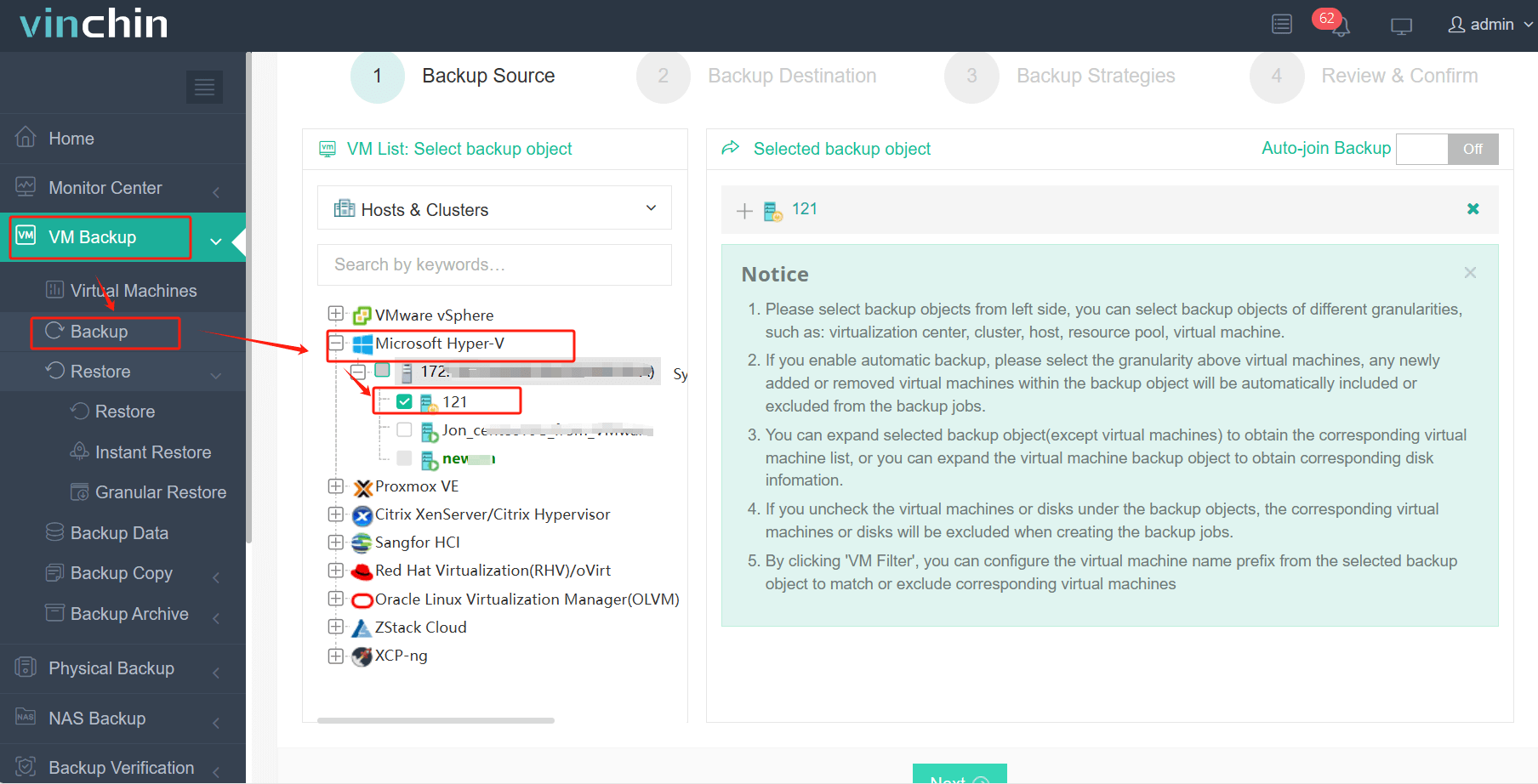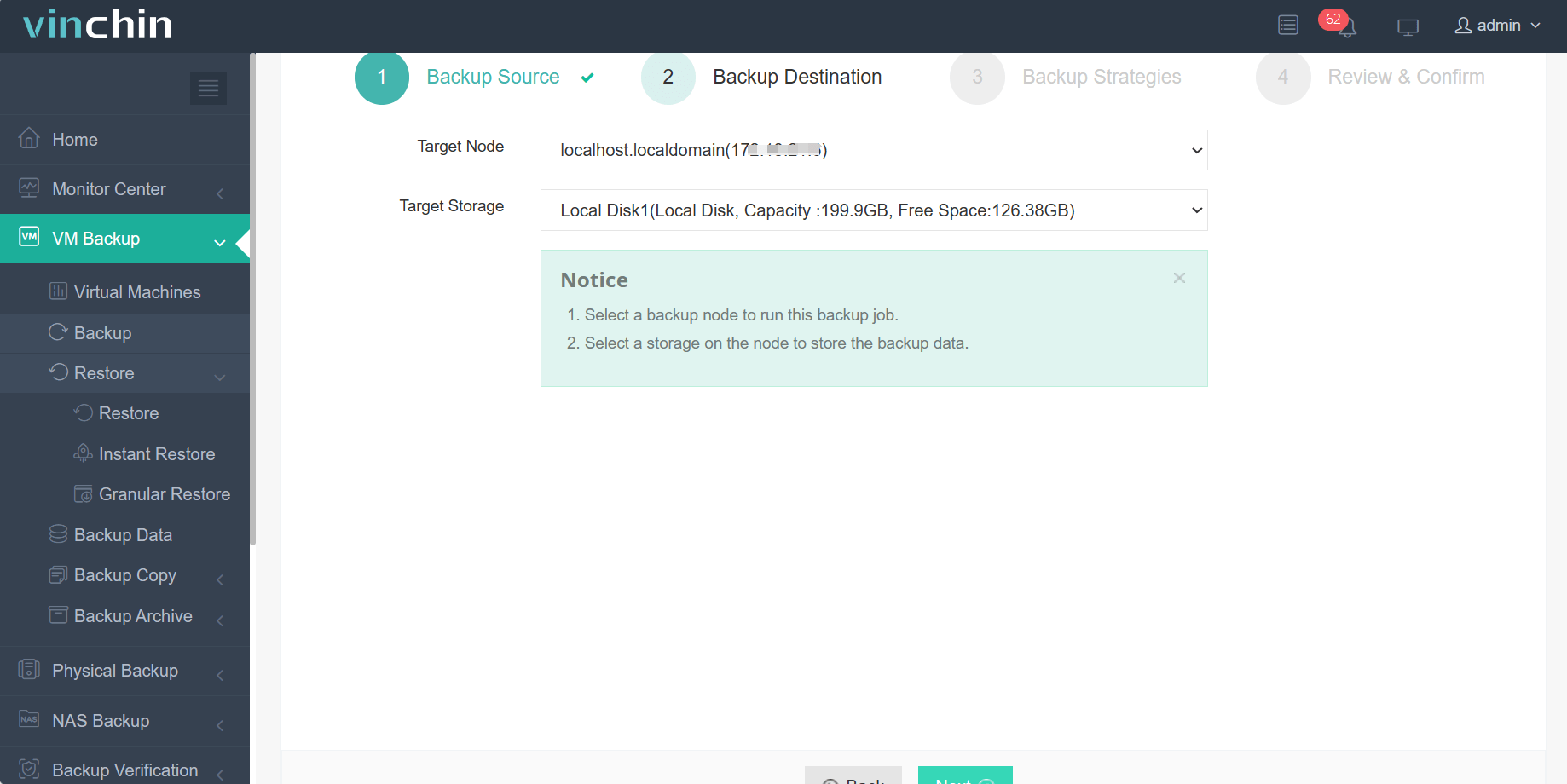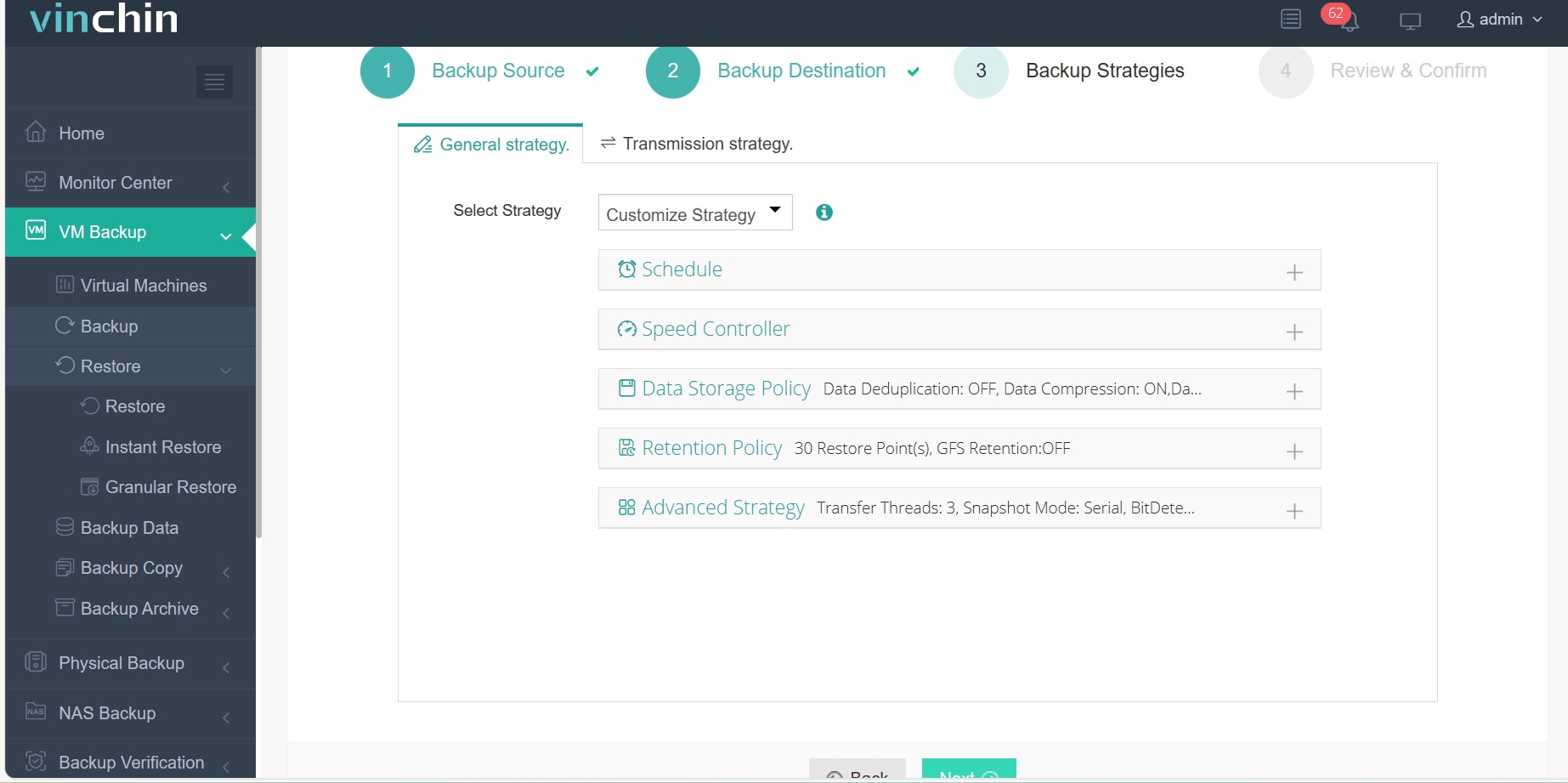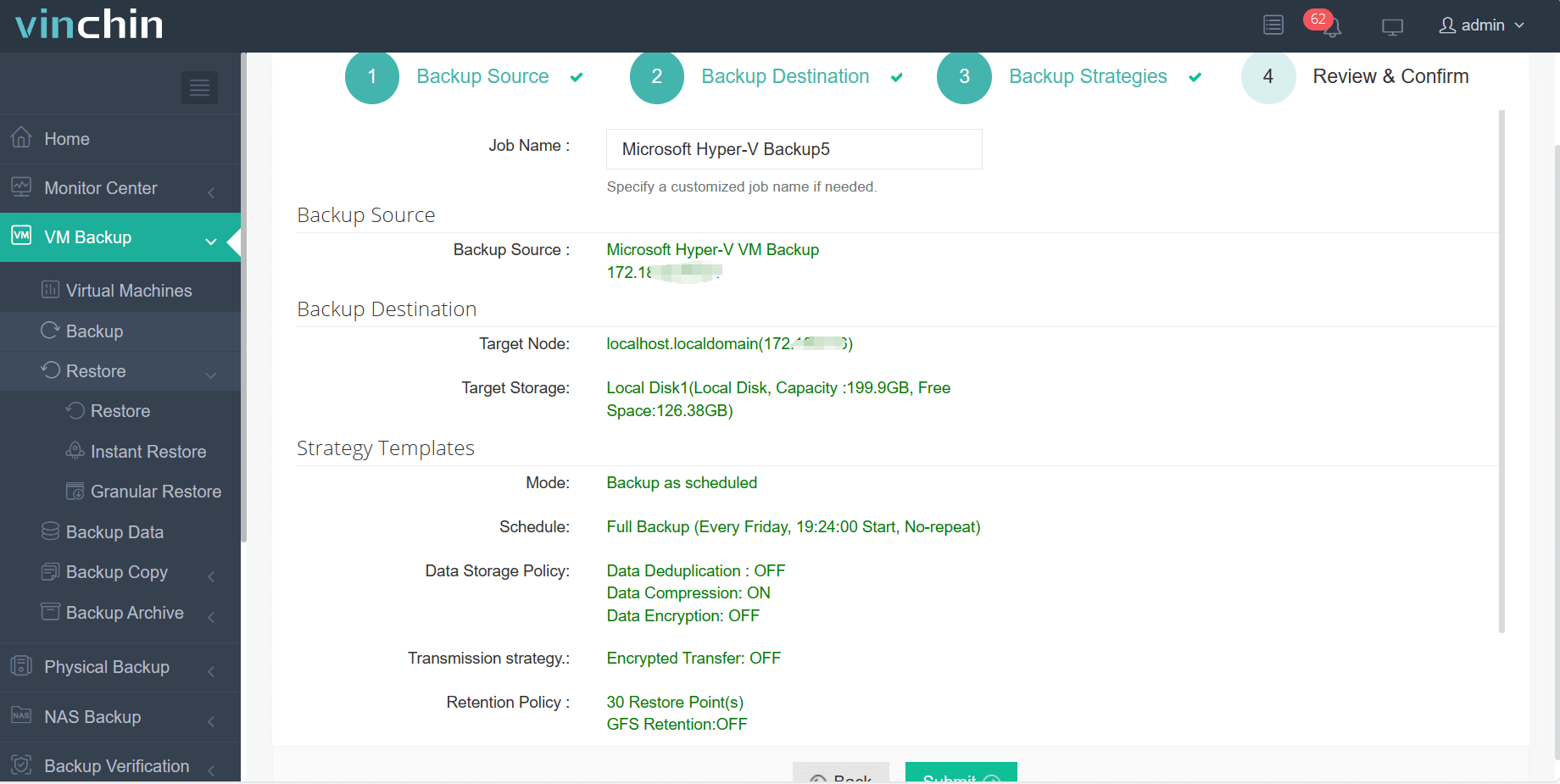-
What is Hyper-V checkpoint?
-
How to create Hyper-V checkpoint?
-
How to recover VM with Hyper-V checkpoints?
-
How to clear Hyper-V checkpoint?
-
Backup Hyper-V environment with Vinchin Backup & Recovery
-
Hyper-V Checkpoint FAQs
-
Conclusion
Hyper-V is one of the most popular virtualization solutions provided by Microsoft. It is easy to create VM after Windows operating system is installed on the server.
How to fix a problematic VM? Microsoft has released some disaster recovery tools like Hyper-V Replica to help users confront issues. Hyper-V checkpoint is one of the features in Hyper-V Manager to help users fix a problematic VM. See how it works in Hyper-V environment.
What is Hyper-V checkpoint?
Snapshot technology can be used to capture and retain the status of operating system. If virtual machine suffers from any issues leading to crash, snapshot will help revert the virtual machine to the previous state like time machine.
It has another name in Hyper-V environment, checkpoint. Checkpoint works in the same way as snapshot does, creating application-consistency recovery points.
There are two kinds of Hyper-V checkpoints, standard checkpoint and production point. Standard checkpoint takes VM snapshot but might cause data consistency issues. It is the only kind of snapshot before Windows 10. Later, the improved snapshot production checkpoint is added to Hyper-V. Production checkpoint uses Volume Shadow Copy Service or File System Freeze on a Linux virtual machine to create a data-consistent backup of the virtual machine.
These two kinds of checkpoints can be switched as you wish in Hyper-V Manager or with PowerShell.
Checkpoint is still snapshot which is not good as backup. For higher-level Hyper-V environment protection, you can make Hyper-V backup.
How to create Hyper-V checkpoint?
Hyper-V checkpoint is often created in Hyper-V Manager. Before creating checkpoints for any VM, you need to enable checkpoint feature first.
In Hyper-V Manager, right-click the VM > select Settings > click Checkpoints > tick Enable Checkpoints > select Production checkpoints or Standard checkpoints > click Apply
Repeat this procedure on every VM which needs to be taken snapshot. Then you can easily take snapshot of any VM.
Just find the time when you think it is necessary to take a snapshot of VM, right-click the VM in Hyper-V Manager, and select Checkpoint. The Status column will be shown Creating Checkpoint. After just a couple of seconds, a pop-up will say that checkpoint has been created.
If you have any issues during creating checkpoint, please refer to the post How to Fix Hyper-V Checkpoint Operation Failed.
You can also use commands to checkpoint Hyper-V VM with PowerShell.
To enable Hyper-V checkpoint with PowerShell, type the command (select one checkpoint type):
Set-VM -Name <VM Name> -CheckpointType Standard
Set-VM -Name <VM Name> -CheckpointType Production
To checkpoint Hyper-V VM with Powershell, type the command:
Checkpoint-VM -Name <VM Name> -SnapshotName <Snapshot Name>
How to recover VM with Hyper-V checkpoints?
The aim of creating checkpoint is to confront any kinds of VM issues. OS updates sometimes bring trouble and lead to unstoppable automatic reboots. If you have created checkpoint before, this problem can be easy to solve.
In Hyper-V Manager > select the problematic VM > under Checkpoints tab, find the correct checkpoint and right-click it > select Apply > the pop-up will say Are you sure you want to apply the selected checkpoint? The virtual machine's current state will be lost. You can click Apply to directly revert VM to the previous state, or select Create Checkpoint and Apply to quickly take a snapshot for the present VM before recovering VM.
Hyper-V snapshot can be not only used to restore VM, you can also use Hyper-V snapshot to create new VM.
How to clear Hyper-V checkpoint?
Hyper-V checkpoint also takes storage on virtual disk. You can clear the checkpoint to release storage. Hyper-V checkpoints exist like differencing disks. If you wish, there is a post helping you merge Hyper-V checkpoints.
To delete Hyper-V checkpoint:
Just select the VM in Hyper-V Manager > under Checkpoints tab, right-click the VM > select Delete Checkpoint
To quickly create new VM, you can also try cloning Hyper-V VM.
Backup Hyper-V environment with Vinchin Backup & Recovery
Snapshot works well in many situations but is not good for long-term disaster recovery. VM Backup is the effective solution to confront more issues.
Vinchin Backup & Recovery is the professional Hyper-V VM backup solution and has served users from all over the world. It is easy to deploy in virtual environment to help quickly build backup system.
A user-friendly Web Console is provided to let users complete all the operations. Vinchin Agentless Backup technology allows directly backing up VM after adding Hyper-V host to backup server, greatly reducing IT administrator's work.
Different VMs need to be backed up in different ways so Vinchin provides many backup strategies to let users configure backup jobs in every way. There are strategies like full backup, incremental backup, differential backup, schedule, speed, data deduplication, data compression, data encryption, GFS Retention Policy, etc.
The VM backup can be used to restore on the primary host or another host to perform VM migration or clone. If you want specific files from the VM backup, Granular Restore will help recover data at file level.
You just need 4 steps to backup Hyper-V VMs.
1. Select the Hyper-V VMs

2. Select the backup storage
3. Select the backup strategies

4. Submit the job
This brilliant Hyper-V backup solution is free to try for 60 days, no restriction on features. Just download and deploy it in your virtual environment to backup your IT environment in a new way.
Hyper-V Checkpoint FAQs
Q1: How do I automatically delete old checkpoints to save disk space?
Use a PowerShell script scheduled in Task Scheduler: Get-VMCheckpoint -VMName "<VM>" | Where-Object {$_.CreationTime -lt (Get-Date).AddDays(-X)} | Remove-VMCheckpoint
Q2: Can Hyper-V checkpoints affect VM performance?
Yes, excessive checkpoints can degrade I/O and increase disk latency, so keep only needed checkpoints and merge or delete them promptly.
Q3: How do I revert to a specific checkpoint via PowerShell?
Use Restore-VMCheckpoint -VMName "<VM>" -Name "<CheckpointName>" to apply the chosen snapshot without opening Hyper-V Manager.
Conclusion
Hyper-V checkpoint is the inherent feature in Hyper-V to let users create snapshot in case of any VM issues. This post gives an overview on Hyper-V checkpoint and introduces best practices for Hyper-V checkpoint utilization, including enabling, creating, and clearing Hyper-V checkpoint, recovering VM with Hyper-V checkpoints, and switching Hyper-V checkpoint type.
Hyper-V snapshot can be used to create new VM, but you can also migrate Hyper-V VM from one host to another in other ways.
VM backup is better than snapshot for long-term disaster recovery. It is recommended to deploy Vinchin Backup & Recovery in Hyper-V environment to protect VM in a better way. Just grasp the free trial to protect your virtual environment more efficiently.
Share on:






